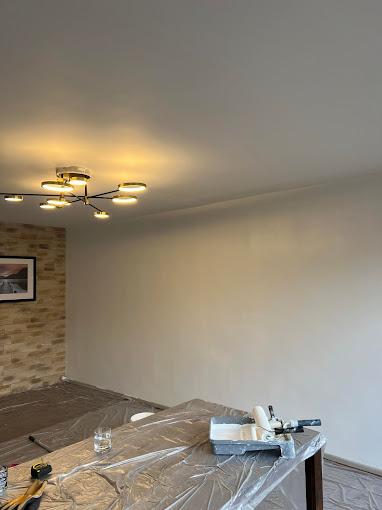The introduction : The faux finishes are an appealing method of adding the appearance of depth, texture and visual interest to the surfaces of your home. Through a variety of techniques and materials that give an illusion of different textures, including stone, marble or wood, and even an aged patina. Fake finishes can be a nifty and affordable substitute for natural substances which allows you to create breathtaking effects and alter any room. This article we'll look into the art fake finishes ranging from the most popular methods to tips for application and techniques. Prepare to unleash your creative side as you master creating surfaces with depth and texture.
Section 1 Understanding Faux finishes : Faux finishes are techniques for painting decoratively which replicate the look of natural materials, or create distinct effects. They are applied to a variety of surfaces like ceilings, furniture, walls and even on the trim. The faux finishes can be adapted and customised that allow you to create an array of designs to match your personal preferences. If you're looking to achieve the appearance of rustic stone walls, beautiful marble countertops or even weathered wood furniture Faux finishes are a wealth of possibilities.
Section 2 Fake Finish Methods : There are a variety of well-known faux finish techniques which can be employed to create different styles and textures. The most popular techniques are:
- Venetian Plaster: This method involves the application of layers of plaster to give a smooth, finished, or marble surface.
- Wood grain: With this method, you can reproduce the look and feel of different species of wood, including knots and grain patterns.
- Trompe-l'oeil technique: This technique creates optical illusions that make flat surfaces appear 3D. It is employed to create fake windows, arches or murals.
- Metallic Finishes: By using metal paints you will be able to get a stunning metallic appearance that adds a touch of glitter and glam to the surfaces.
- The distressed or weathered look This method creates the appearance of weathered or aged surfaces, like distressed furniture or old-fashioned walls.
Section 3 Preparation and Application : A thorough preparation is crucial to achieve effective faux finishes. Start by cleaning and priming the surface to make sure it's free of grease, dirt and other imperfections. If necessary, fix any holes, cracks, or irregularities. Then apply primer or a base coat to match the faux finish method you'll be applying. This primer provides an even and smooth surface to apply the next layers.
In applying the fake finish be sure to follow the precise instructions for application. It is important to test the technique on samples boards or other inconspicuous surfaces prior to applying the finish over the whole surface. Make use of the right tools, like sponges, brushes or rollers, to achieve the desired look. Play around with layering, mixing and varying pressure levels to create a realistic depth.
Section 4 Tips and Tricks to faux finishes :
- Get clear on your goals before you begin your faux-finish project, you should have a clear concept of what you want to achieve. Find inspiration and images to guide your process and color selections.
- Make use of high-quality materials: invest in high-quality glazes, paints and equipment to get an attractive and polished final. The materials you buy at a bargain may not offer the desired appearance or durability.
- Make sure you practice and experiment. Fake finishes require some practice before mastering. Try different methods, colors and tools to discover the ideal outcome for your design.
- Do small sections of work Fake finishes are generally used in layers which is why it is best to apply them in smaller sections at a time. This will allow you to concentrate on creating the desired effect before moving onto your next step.
- Blend edges and feather edges To create a seamless, natural appearance blend and feather edges of every layer. This can prevent sharp lines and provide an easier transition between different textures or colors.
- Be prepared to make errors: Faux finishes can be accommodating. If you're unhappy with a certain area, you'll have the option to apply the layer again or alter it until you reach the desired effect.
The conclusion: The art of faux finishes can open the door to a whole new world of possibilities and possibilities to change the look of surfaces within your home. With a wide range of techniques available and some practice it is possible to create amazing effects, textures along with visual effects. Be sure to make sure you prepare the surface in a proper manner, follow instructions for application, and choose top-quality materials to create an expert finish. Therefore, let out your creative side, try out faux finishes and observe as your walls furniture and ceilings come to life through texture and depth.
